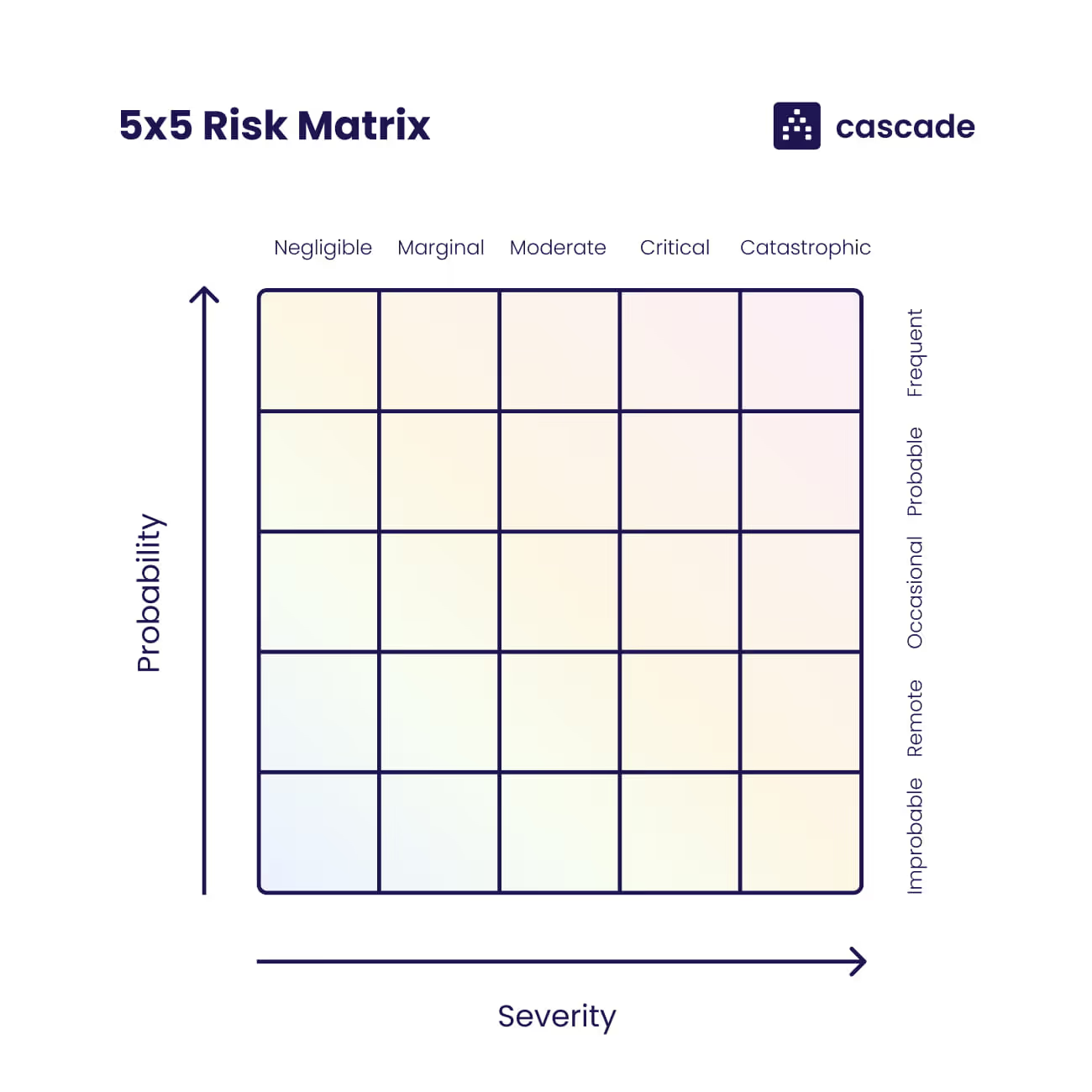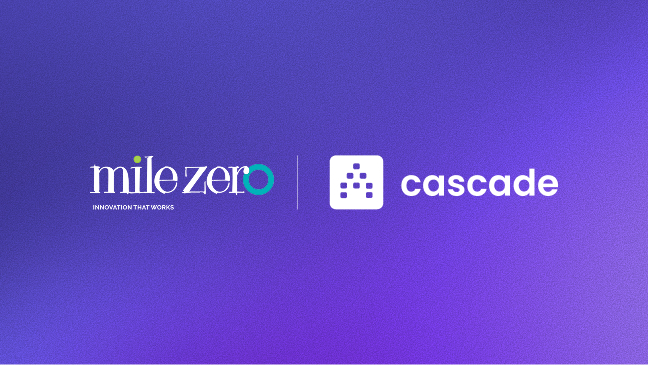Effective enterprise risk management is more important than ever. A recent 2023 State of Risk Oversight Report by NC State University shows that while two-thirds of business leaders (out of 454 respondents) acknowledge escalating risks, only a third are geared up to tackle them.
This points to a serious disconnect between the organization’s needs and its risk management strategy. No plan is bulletproof, but effective preparation and monitoring will help you minimize risks and their impact on business.
In this article, we explore the different risk mitigation strategies and how you can implement them to protect your organization’s performance and stability.
What Is Risk Mitigation?
Risk mitigation is a proactive business strategy to identify, assess, and mitigate potential threats or uncertainties that could harm an organization’s objectives, assets, or operations. It entails specific action plans to reduce the likelihood or impact of these identified risks.
Conversely, risk management is a broader, more comprehensive process that involves various stages like risk identification, assessment, response, and monitoring.
While risk mitigation focuses on direct actions to eliminate or diminish threats, risk management encompasses the entire life cycle of dealing with risks.
They may sound similar, but risk mitigation is a subset and vital component of the risk management process.
%20(1).avif)
Why Is Risk Mitigation Important?
The stakes are high, according to the 2023 State of Risk Oversight Report. We're seeing near-record levels of risk events and complexities across organizations.
So what does a robust risk mitigation plan offer you? For starters, it's not about ignoring risks, but rather tackling them head-on with actionable steps. This ensures you have a business continuity plan in the face of disruptions.
An effective risk mitigation process also provides a clearer picture of potential obstacles, which helps with strategic decision-making. This helps manage operational risks and create a resilient supply chain. It also assures employees that they are working with a company that prioritizes job security.
But risk mitigation isn't all defense—it also sets you up to seize growth opportunities. By identifying and minimizing risks, you can make calculated moves that optimize your business portfolio.
What Are The Types Of Risks?
Your risk mitigation strategies should be tailored to your business, which means it can't be a carbon copy of another organization's risk mitigation strategy. The risks you face will vary based on your industry, sector, and other unique factors.

Some of the most common types of risks include:
- Competitor risk: Threats from rival organizations.
- Economic risk: Vulnerabilities due to economic fluctuations.
- Political risk: Impact of political factors.
- Financial risk: Exposure to financial uncertainties.
- Operational risk: Daily hazards in operations, including cybersecurity risks.
📚You can learn more about risk types and strategies to mitigate them in this article.
What Are The Risk Mitigation Strategies?
Described below are the most common risk mitigation strategies.
Tip: You should always start with a complete risk analysis to pick the right strategy for your business.
Risk avoidance strategy
The most straightforward way to deal with risks is to remove them entirely. This involves steering clear of any actions or situations that could harm your business. But be cautious: sidestepping one risk might require sacrificing other resources.
💡Example:
A large technology company plans to launch a new product in an international market, but a risk assessment uncovers considerable regulatory and political obstacles.
Opting for a risk avoidance strategy, the company chooses not to enter the new market, eliminating these high-stakes risks. Instead, it reallocates resources to bolster existing markets or pursue other low-risk opportunities.
While this approach removes immediate risks, it also sacrifices the potential revenue and growth the new product could have generated in that market.
Risk transfer strategy
Sometimes you can pass risks on to someone else. This usually involves using contracts, insurance, or outsourcing. This is a good strategy if it's cheaper to pay another company to take on the risk than to deal with it yourself.
💡Examples:
- Work with a third-party logistics provider (3PL) for your shipping and delivery needs. The contract often includes clauses that transfer the risk of damaged or lost goods during transit to the 3PL. Upon damaged products, the 3PL is liable to compensate your business for the losses.
- Pay an insurance company a small fee to avoid the full financial implications of unforeseen events like accidents.
📚 Recommended read: Unlocking The Power Of Logistics Strategy To Achieve Supply Chain Excellence
Risk acceptance strategy
Sometimes taking a risk is a good choice, especially if the potential reward is high or the likelihood of problems is low. Each business has its own comfort level for risk and uses that to decide which risks are worth taking. It’s also better to accept risks if the costs of avoiding them are too high.
💡Example:
Many startups know they have a high chance of failing early on. But they're willing to take that risk because the possible rewards, like growth and profit, make it worthwhile.
If you’re following this strategy, you must constantly monitor the threat level. If it rises above acceptable risk levels, or if your risk appetite changes, you might need to switch to a different strategy to protect your business.
Risk reduction strategy
In cases where you can’t avoid or accept the risks, it’s best to pursue measures to reduce their impact altogether. Risk reduction involves implementing proactive and concrete actions to make a potential problem less severe.
💡Examples:
- An oil drilling company in a hurricane-prone region may invest in advanced high-tech weather systems to better predict stores. This move will help them to prepare in advance and reduce the likelihood of costly disruptions due to natural disasters.
- If you identified that you’ll run out of funds to complete a project, you could switch to more affordable materials or scale back the project size. You could also look for extra funding. Each option helps lower the risk of running out of money before completing the project.
Risk monitoring strategy
Risks are an ongoing fact of doing business and carefully monitoring them will ensure that mitigation measures remain effective. Risk monitoring involves regular evaluations and adjustments to strategies to address changing circumstances.
💡Example:
A manufacturing company can continually monitor supply chain risks like supplier reliability, geopolitical issues, and market trends. If there are potential disruptions, they can take timely actions to adjust sourcing strategies or secure alternative suppliers.
What Are The Steps To Mitigate Risks?
The following steps will help you identify risks and implement a responsive risk mitigation strategy:
1. Understand what you’re up against
Systematically examine all the possible risks to your business by conducting an internal and external analysis. You can use the SWOT analysis to identify the current and future state of your business. Pay attention to the “Threats” quadrant that highlights potential risks.
.jpg)
You can also use other strategic analysis tools like PESTLE Analysis or Porter’s 5 Forces to analyze the business’s external environment for any potential threats.
💡Involve key stakeholders to gain a diverse perspective and access to insights that may not be immediately apparent. They can help you see what’s happening on the front lines so you can assess risks accurately.
2. Assess and prioritize the risks
After listing all the possible risks, it’s time to analyze the probability of their occurrence and the potential negative impact. You can use a risk matrix to help you assess and prioritize risks based on their likelihood and impact. This will help you focus your resources on the most critical risks.

💡While the risk matrix is easy to read and use, it often relies on qualitative judgments. This can sometimes result in poor resource allocation. To avoid this, whenever possible, convert risks into monetary terms. This provides a more accurate picture of how each risk could financially impact your business.
3. Prepare a plan to execute your risk mitigation initiatives
Once you’ve identified and categorized the potential risks to your business, it’s time to create an action plan. For each identified risk, decide on the most suitable approach: will you avoid, mitigate, transfer, or simply accept it?
Once you've determined your approach for each risk, allocate the needed resources. This includes people, money, and time devoted to implementing the chosen risk mitigation strategies. Have a backup with contingency plans for risks that may not be fully addressed by your initial strategies.
💡You can use Cascade’s Risk Mitigation Strategy Plan Template to cover all the key elements of an effective strategy.
4. Execute your strategy and monitor risks
Risks are always changing. That's why you need to continuously keep an eye on them to make sure your mitigation plans are up-to-date. Establish regular check-ins, such as daily or weekly meetings, to quickly assess the status of your risk mitigation strategies.
To make this process even more efficient, use specific metrics tied to the risks you're managing. Set up triggers that alert you when it's time to take extra steps.
💡Look for strategy execution tools like Cascade that integrate seamlessly with various business platforms. This allows you to bring all your key business data together in a centralized hub, making it easier to stay on top of risks and adjust your strategies as needed.
5. Update risk and adapt your plan
As your business landscape evolves—whether due to market shifts, technological upgrades, or internal developments—your risk mitigation plan must keep pace. Not only can new risks arise, but the importance of existing risks can change as well.
To make these adjustments more data-driven, you can use Cascade's reports.
.avif)
These reports help you pinpoint any threats, monitor risks, and keep your team aligned with updated priorities. By constantly refining your plan, you ensure it remains effective in a shifting environment.
Mitigate Risks And Master Chaos With Cascade 🚀
To be resilient and successful, it's crucial to spot and neutralize threats before they escalate. Instead of being reactive, the key is to be proactive—maintaining financial stability, safeguarding your reputation, and staying ahead of the competition.
With features like alignment and collaboration, real-time analytics, and data tracking in one place, Cascade empowers you to detect and manage risks with confidence.
Our strategy execution platform integrates various data sources, giving you centralized visibility over your execution engine. This insight enables you to clear dependencies and mitigate potential risks faster to improve your odds of success.
Curious? Sign up for free or book a 1:1 with Cascade strategy expert.







.png)
.jpg)
.jpg)



